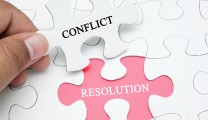Conflict is unavoidable in any organization where diverse personalities, ideas, and pressures collide. Instead of fearing conflict, great leaders use it as a catalyst for growth, innovation, and stronger relationships. Conflict Resolution Mastery is the ability to address tension constructively, transform disagreements into solutions, and maintain trust during difficult conversations.
1. Why Conflict Isn’t the Problem — Poor Handling Is
Teams don’t break because differences exist. They break because differences are ignored, suppressed, or mishandled.
When conflict is unresolved:
-
Productivity drops as energy shifts from work to frustration
-
Small issues silently accumulate into major disputes
-
Toxicity spreads, damaging culture and morale
-
Trust erodes, causing disengagement and turnover
Handled well, conflict strengthens team cohesion and mutual respect.

2. The “CAR” Framework for Resolving Conflict Constructively
Use this 3-step approach for difficult conversations:
-
C – Clarify the Issue: Allow each party to express their perspective without interruption. Focus on facts, not assumptions.
-
A – Address the Impact: Highlight how the conflict affects team goals, relationships, and performance.
-
R – Resolve with Action: Co-create a clear agreement on solutions, behavioral expectations, and future prevention.
This method shifts conversations from blaming to problem solving.

3. A Real Example: Turning Conflict into Collaboration
In a manufacturing firm, two department heads constantly clashed over resource allocation, creating tension across teams. Instead of reprimanding them, the director facilitated a CAR-based session. Each leader clarified concerns, acknowledged the impact their behavior had on others, and agreed on a shared resource plan with monthly check-ins.
Within 6 weeks, cooperation improved, joint initiatives increased, and team satisfaction scores rose by 28%.
Conflict became the trigger for better systems.
4. Leaders Who Master Conflict Build Stronger Cultures
Conflict is not a threat — it is feedback. Avoiding it creates silence, resentment, and underperformance. Addressing it with courage and emotional intelligence creates respect, understanding, and unity.
The best leaders aren’t those with zero conflicts, but those who turn conflicts into breakthroughs.











Replies to This Discussion